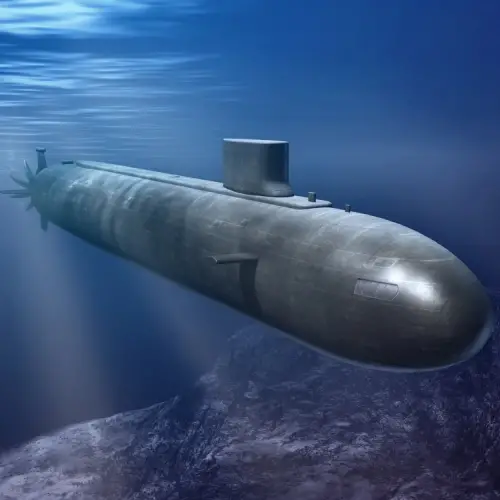
Physics is everywhere. Although it sometimes seems like a difficult subject, it actually describes how the world around us works. From turning on the light to sending a rocket into space, physics explains how and why things happen.
In this article, we present 20 examples of physics present in our daily lives with detailed explanations.
1. Gravity and falling objects
 Gravity is the force that pulls objects toward the center of the Earth. It's the reason an apple falls from a tree and it also keeps the Moon in orbit around the Earth. Without gravity, everything would float around uncontrollably, and simple activities like walking or throwing a ball would be impossible.
Gravity is the force that pulls objects toward the center of the Earth. It's the reason an apple falls from a tree and it also keeps the Moon in orbit around the Earth. Without gravity, everything would float around uncontrollably, and simple activities like walking or throwing a ball would be impossible.
2. Atmospheric pressure
When we drink through a straw, we are taking advantage of the pressure difference. By sucking, we reduce the pressure inside the straw and the liquid rises due to the atmospheric pressure outside. This same principle explains how syringes and barometers that measure air pressure work.
3. Inertia in transport
 When a car brakes suddenly and your body continues forward, that's inertia at work. Newton's first law says that an object in motion tends to keep moving unless an outside force stops it. This same law explains why, when you take a sharp turn, you feel like your body is being pushed to one side.
When a car brakes suddenly and your body continues forward, that's inertia at work. Newton's first law says that an object in motion tends to keep moving unless an outside force stops it. This same law explains why, when you take a sharp turn, you feel like your body is being pushed to one side.
4. Sound waves and music
Sound travels in waves through the air. When we speak or listen to music, our ears pick up the vibrations in the air and our brain interprets them as sounds. The speed of sound varies depending on the medium: it travels faster in liquids and solids than in air.
5. Friction force when walking
 When we walk, friction between our shoes and the ground keeps us from slipping. Without friction, walking would be like trying to move on ice. Friction also helps us stop when we slow down while running or when we try to hold an object without letting it slip from our hands.
When we walk, friction between our shoes and the ground keeps us from slipping. Without friction, walking would be like trying to move on ice. Friction also helps us stop when we slow down while running or when we try to hold an object without letting it slip from our hands.
6. The parachute effect
A parachute opens and slows a skydiver's fall due to air resistance, a force that opposes gravity and slows down the sky. The larger the area of the parachute, the greater the air resistance and the slower the skydiver falls, allowing him to land safely.
7. Law of action and reaction in rockets
 When a rocket expels gases backward, they push the rocket forward. This is Newton's third law: "For every action there is a reaction of equal magnitude and opposite direction." This same principle applies to swimming or pushing a heavy object.
When a rocket expels gases backward, they push the rocket forward. This is Newton's third law: "For every action there is a reaction of equal magnitude and opposite direction." This same principle applies to swimming or pushing a heavy object.
8. Refraction of light in water
If you put a pencil in a glass of water, it will appear bent. This is because light changes speed as it passes from air to water, a phenomenon known as refraction. It is also responsible for mirages in the desert and the way our eyes focus light.
9. Electromagnetism in magnets
When you use a magnet to stick a piece of paper to the refrigerator, you are seeing electromagnetism in action. Magnets generate a magnetic field that attracts metal objects. This principle is used in electric motors, generators, and even magnetic stripe credit cards.
10. Electricity in household appliances
From televisions to microwaves, all electrical appliances are powered by electricity, which is the movement of electrons through a conductor. Without electricity, our modern lives would be completely different, as we rely on it to light, heat and power devices.
11. Kinetic energy in sports
When you kick a ball, you transfer kinetic energy to it, which is the energy of motion. The harder you kick, the faster it moves. This energy also explains why a ball bounces when you drop it and why a cyclist needs to apply more force to accelerate.
12. Potential energy on a roller coaster
 At the top of a roller coaster, the cars have gravitational potential energy, which is converted into kinetic energy as they descend. The higher the height, the more potential energy is stored, resulting in a higher speed on the way down.
At the top of a roller coaster, the cars have gravitational potential energy, which is converted into kinetic energy as they descend. The higher the height, the more potential energy is stored, resulting in a higher speed on the way down.
13. Thermal expansion in bridges
Materials expand with heat. That's why bridges have small spaces between the structures to allow for expansion without damaging them. Otherwise, the structures could crack or warp with temperature changes.
14. Heat conduction in a metal spoon
If you leave a metal spoon in a cup of hot coffee, the spoon heats up by conduction, a process where heat is transferred through a material. This same principle applies to pots and pans when cooking.
15. Hot air convection
 Warm air tends to rise, while cold air sinks. This explains why hot air balloons can rise when the air inside them is warmed. It also influences the formation of air currents and weather patterns.
Warm air tends to rise, while cold air sinks. This explains why hot air balloons can rise when the air inside them is warmed. It also influences the formation of air currents and weather patterns.
16. Sun radiation
The heat we feel from the Sun is transmitted by radiation, a process in which energy travels in the form of electromagnetic waves without the need for a medium. This is the same principle used in microwaves and in the transmission of radio and television signals.
17. Wave motion in tsunamis
Tsunamis are caused by underwater earthquakes that displace large amounts of water, generating waves that travel rapidly across the ocean. These waves can travel great distances with devastating energy when they reach the coast.
18. Archimedes' principle and ships
 Boats float because they displace a quantity of water whose weight is equal to the weight of the boat. This is Archimedes' principle in action. The greater the volume of water displaced, the greater the buoyancy of the object.
Boats float because they displace a quantity of water whose weight is equal to the weight of the boat. This is Archimedes' principle in action. The greater the volume of water displaced, the greater the buoyancy of the object.
19. Reflection of light in mirrors
When you look into a mirror, light bounces off the mirror and back into your eyes, allowing you to see your reflection. This phenomenon is called reflection and is the basis for how periscopes and telescopes work.
20. The Doppler effect and ambulance sirens
When an ambulance approaches, the sound of the siren seems higher-pitched, and when it moves away, it becomes lower-pitched. This happens because sound waves are compressed when the object approaches and expanded when it moves away, a fundamental phenomenon in astronomy and radar detection.